This is “The Ultimate Guide to Set Up a Pasta Production Line with an Industrial Pasta Maker.” This article will cover the key parts and processes necessary to establish an efficient and productive pasta production line. This guide aims to give you a clear path to starting your pasta manufacturing business. From choosing the right equipment to knowing how things work and best practices when running it all, we’ll go over everything! Our insights are meant for novice entrepreneurs like yourself who want their first startup or existing companies ready to branch out into new territory; either way, our step-by-step approach will ensure that industrialized noodles become second nature to you before long. So, let us dive into what makes great spaghetti so extraordinary! And get ready for some fun along the way because success tastes better with sauce on top!
How Does a Pasta Production Line Work?
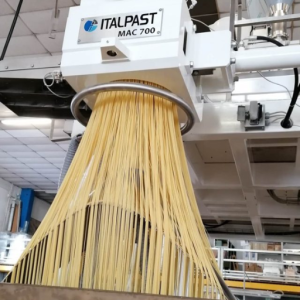
Image source: https://www.italpast.com/
The operation of a pasta production line is done in stages whereby raw materials are converted to finished products. It starts with mixing flour and water to form the dough, which is then kneaded to create the best texture. A pasta extruder feeds this dough, and through specialized die sets, it takes different forms depending on the type of pasta being made. Extruded pasta gets cut into desired lengths and may be dried or cooled, among other processes. Lastly, the packaged product goes out for distribution. Quality control at each stage ensures consistency throughout the process, thus emphasizing accuracy and dependability in the industrial production of noodles.
Understanding the Pasta Production Process
Pasta production involves several steps. The first step is selecting quality ingredients, including semolina flour and water. These two ingredients are mixed to create a uniform dough in the next stage. This kneading process helps develop gluten, giving the pasta its final texture. The next step is extrusion, where the dough passes through molds to produce different shapes like spaghetti or penne. At this point, the length of the cut pasta has been determined.
Next comes drying, depending on what type of noodles you are making, which reduces moisture content for longer shelf life while preventing spoilage; air drying methods or heat methods can be used here, too! After cooling down from being dried out, packaging takes place so it stays fresh during storage/transportation periods. Quality control checks throughout all stages ensure customers get the high-quality products they expect every time they buy them – and thus, delicious yet durable noodles result from these processes working together seamlessly!
The Role of Each Pasta Making Machine
Each machine is uniquely important to ensure efficiency and quality in the production of pasta.
- Dough Mixer: A dough mixer is used for the first step, where semolina flour and water are mixed to form a uniform dough. This machine mixes the ingredients well, which is vital for the consistency of the pasta.
- Kneader: After mixing, the dough goes into a kneader. This machine is important for gluten development, which gives the pasta structure and texture. Proper kneading leads to the desired elasticity in the end product.
- Extruder: The extruder shapes the dough into different types of pasta. The machine pushes dough through molds, creating shapes like spaghetti or fusilli. Using an extruder creates uniformity in shape, contributing even to cooking.
- Dryer: Next, shaped pasta enters drying machines that reduce moisture content, which is critical for preservation, extending life span, and preventing spoilage. Depending on its desired features, pasta can be dried using air or heat.
- Packaging Machine: Finally, automated packing machines package pasta as this stage protects it against contamination while maintaining its quality during storage and transportation. Thus, a reliable, designed process ensures that the final products are efficient and reach consumers optimally.
Every piece of equipment involved in making noodles adds up to make them delicious, long-lasting goods that meet people’s tastes when they eat food around their area daily because it would be hard not to like such tasty things!
Key Components of a Pasta Processing Line
- Feeding System for Ingredients: This system ensures that the correct quantities of flour and water are measured precisely and fed into the mixing process, resulting in consistent dough quality.
- Mixing and Blending Equipment: A strong mixer combines the ingredients by integrating water into the flour to create a unified dough. This is important to achieve the desired texture and moisture content.
- Cooling or Tempering Units: After kneading, cooling or tempering units may be used to equalize the dough’s temperature and relax the gluten, making it easier to shape later on.
These components streamline pasta manufacturing processes while ensuring efficiency and high-quality standards throughout production stages.
What Types of Pasta Machines Are Used in a Production Line?
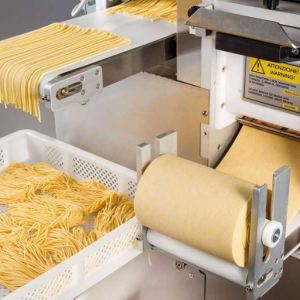
Several key machines are employed in a pasta production line to ensure efficiency and quality. They include:
- Extruders: These machines shape the pasta by forcing it through a die, which creates different shapes, such as spaghetti, penne, or fusilli.
- Sheeters: Sheeters can be used to make lasagna sheets, ravioli, and other flat pasta. They roll out the dough until it reaches the required thickness.
- Cutters: Extruded pasta is cut into equal lengths by cutters so that all pieces will be identical when ready for consumption.
- Dryers: Pasta must be dried to specific moisture content for stability on shelves where they’re stored before being sold;
- Cookers: Sometimes found in production lines, these devices pre-cook noodles before packaging them, thereby increasing the convenience level among consumers who buy them
Different types of machines play distinct yet significant roles in transforming raw materials into various kinds of noodles available globally.
Extruder Machines: The Heart of Pasta Making
The pasta-making process depends heavily on extruder machines designed to form dough into different pasta shapes. These machines apply pressure and push the dough through specially made dies, thus creating different shapes such as spaghetti, macaroni, or fusilli. The uniformity in size and shape is guaranteed by the precision of extruders, which also affects the texture of the pasta. Manufacturers can adjust modern extruders’ settings to manage moisture content and temperature, increasing the end product’s quality. Moreover, with technological advancement, it has become possible for extrusion processes to be integrated with other key stages like cooking and drying, making production more efficient.
Differentiating Between Macaroni, Spaghetti, and Other Varieties
Pasta varieties such as macaroni and spaghetti differ mainly in their intended culinary use, size, and shape. Tubular macaroni is short compared to long, thin spaghetti that goes well with many sauces such as marinara or creamy alfredo. Other types include penne, which has diagonal cuts at both ends, thus allowing it to hold onto sauces more quickly due to its ridged surface. Fettuccine—a flat ribbon-like noodle often used with heavy cream-based sauce—creates a unique texture for every dish it prepares. Hence, they should always be chosen carefully when cooking different meals.
The Importance of Dryers in a Dry Pasta Production Line
Dryers are critical in making dry pasta because they reduce moisture and give it a longer shelf life. It ensures the pasta keeps its form and texture while stopping spoilage caused by microbe activity. Top-notch dryers must include controlled temperature, humidity levels, and airflow all over the place, which is vital for equally getting good drying rates across the board. Furthermore, contemporary methods like multi-stage drying promote more energy efficiency and lessen production time. Manufacturers can improve product quality and consistency by using better drying systems that meet consumer demands for fresh, high-quality pasta.
How to Choose the Best Industrial Pasta Making Machine?
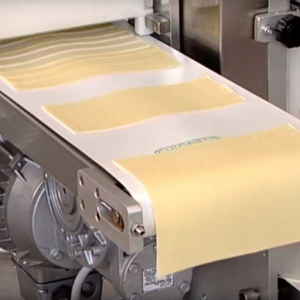
When it comes to choosing an industrial pasta-making machine, there are several important factors that you need to keep in mind. First, determine your production capacity requirements based on volume and speed since machines differ considerably. Then, look at what type of pasta you want to make because some machines can only handle specific shapes or sizes of dough. It’s also essential for the equipment’s user-friendliness and maintenance ease – simple controls and easy-to-clean surfaces will improve operational efficiency significantly. Furthermore, always choose a model made from high-quality materials that guarantee long service life and consistent performance levels throughout its lifetime use period. After all, nobody likes buying new stuff every few months! Finally, don’t forget about supplier warranties and customer support options available so that if anything goes wrong during operation, there is someone who can help fix things up again quickly without costing too much extra money on top of what has already been spent elsewhere beforehand.
Factors to Consider When Selecting a Machine
Selecting an industrial pasta machine revolves around numerous factors that should be well considered. Some of these factors include:
- Production Capacity: Consider daily and peak production demands when evaluating output capabilities.
- Types and Shapes of Pasta: Choose a machine that can produce your desired types of pasta, such as sheets or extruded shapes.
- Durability and Build Quality: Ensure the chosen equipment is made from high-quality, food-grade materials that can withstand constant usage, reducing maintenance costs while extending its life span.
- Ease Of Operation And Maintenance: Look for machines with user-friendly controls that allow quick cleaning after use, thus minimizing downtime due to repairs while increasing productivity levels within the workplace.
- Energy Efficiency: Machines featuring energy conservation methods are highly recommended since they help cut down operational expenses in future periods
- Customer Support And Warranty: It is important to have a reliable company offering good warranty services to deal with any problems arising during the usage period post-purchase
Considering all these points will enable you to choose the industrial pasta machining system best suited to your business needs and objectives.
Comparing Fully Automatic vs. Semi-Automatic Machines
Regarding industrial pasta machines, it is important to understand the distinction between fully automatic and semi-automatic machines.
Fully Automatic Machines: These are machines that run entirely on their own with little human involvement. They do everything from mixing the ingredients to shaping them into noodles and cutting them up. The Advantages of using these machines include faster production speeds, consistently high-quality products, and lower labor costs since they require fewer workers. However, initial costs may be higher than semi-automatics, and operators might need more training before being able to use them properly.
Semi-Automatic Machines: With this type of equipment, some tasks must still be done by a person, while others can be automated, like loading in ingredients or adjusting settings on the machine itself during operation cycles. Generally priced cheaper than full automatics but offering less flexibility for small runs, these models tend towards increased labor expenses along with slight declines in product uniformity over time compared to fully automated counterparts, which are best suited for firms specializing in artisanal pastas or having limited production capabilities due to scale economies involved hereabouts.
At the end of the day, your choice between full automation and partial automation should reflect what you need out of your factory line. When it comes down to budget considerations, available resources allocated toward management levels and required oversight processes throughout different stages involved in making sure everything runs smoothly without any hiccups along the way, so let’s take a look at each option separately.
The Benefits of Stainless Steel in Pasta Machinery
Pasta machines are made of stainless steel for many reasons. First, it is durable and long-lasting because it does not rust or stain. This property is important in industries like food production with high moisture levels. Additionally, stainless steel promotes cleanliness through easy cleaning and maintenance, which complies with health standards in the food industry. Another key benefit of this type of metal is that it can withstand extreme temperatures involved in different cooking processes used to make pasta. Also, due to the strength of stainless steel, more robust designs can be built, leading to less frequent repairs on machinery as they work consistently over time. Therefore, efficient and reliable pasta production should use durable materials that are easy to maintain while ensuring hygiene; thus, making kitchenware out of stainless steel is the ideal choice.
What are the Steps in the Dry Pasta Production Process?
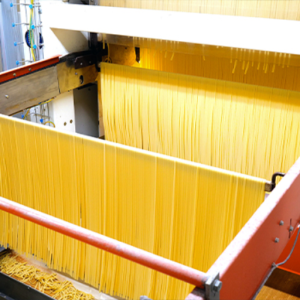
The manufacturing process for dry pasta usually includes several different steps:
- Preparation of Ingredients: The dough is made by pre-measuring and mixing flour and water, which are the main ingredients in this product.
- Mixing and Kneading: To ensure equal moisture distribution throughout the dough, it must be mixed well and then kneaded to develop its gluten structure that gives pasta texture.
- Extrusion: Dough is forced through a die that shapes it into the desired form(s). This step creates unique types of pasta, such as spaghetti or penne.
- Drying: Extruded noodles are placed in a controlled environment where they lose their moisture content. This step is critical for preservation purposes and to prevent spoilage.
- Cooling: After being dried out sufficiently, the product needs to cool to maintain quality while avoiding condensation buildup on its surface.
- Packaging: Finally, packaged for sale/distribution purposes under conditions ensuring freshness protection during transportation – packaging takes place.
To produce high-quality dried pasta that meets consumer standards, all these stages must occur satisfactorily.
Initial Mixing of Raw Materials
The dry pasta-making process begins with mixing raw ingredients, a significant step because it lays the foundation for the end product. For this reason, in the initial phase, premium flour (often durum wheat semolina) and water are accurately weighed and blended in a mixer machine. To achieve the desired dough consistency, flour must absorb water evenly throughout the mixing process. Depending on what type of pasta is being produced at this stage, other ingredients such as eggs or additives may be added too. This first mix has to be adequately balanced to develop gluten structure in the dough, which will determine the texture and quality of the finished product. If done correctly, this step prepares for the kneading and extrusion stages.
Forming Different Pasta Shapes with Extruders
Through extrusion, various shapes can be formed into different types of pasta, with manufacturers able to produce anything from long strands like spaghetti to short shapes like fusilli. The prepared dough moves through an extruder – a machine used for shaping pastas that contain molds or dies – and at this point? What’s important is that each shape needs its specific profile when exiting/going through the die; otherwise, it won’t come out right! After being pushed through these machines located inside them (extruders), they cut our favorite foods into specific lengths before proceeding onto drying/cooking steps, which are more processing methods used widely today, among other things such as innovation designs due to changing consumer preferences over periods where people want something new constantly instead just sticking same old thing forever. When optimizing extrusion parameters, producers increase the texture and cooking quality of different varieties, ensuring satisfaction and consistency consumers get back again next year every season: Thanksgiving, Christmas, Easter holidays, birthdays, parties, picnics, family reunions, road trips, tailgating, BBQs, cookouts, backyard bonfires, sleepovers, camping, hiking, beach volleyball, kickball, ultimate frisbee, flag football.
The Drying Process: Ensuring Quality and Longevity
The drying stage is key in making pasta as it greatly affects quality and longevity. Proper drying takes moisture out of the product, thus preventing spoilage while allowing for extended shelf life. Depending on the type of pasta used, this can occur over several hours to days at controlled temperatures with specific humidity levels, or else it might not work correctly. Gradually reducing moisture content is essential for effective cooking and preservation because it maintains texture and flavor while avoiding mushiness during preparation. Furthermore, ideal conditions contribute to nutrient retention and color stability, ensuring top-notch goods that satisfy buyers’ needs.
What to Look for in a Macaroni Pasta Making Machine?
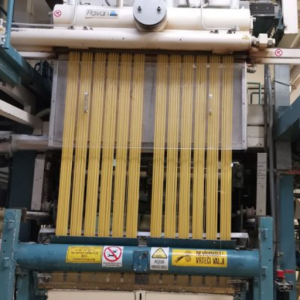
There are some main features to remember for the best performance and quality when choosing a macaroni pasta-making machine. First of all, check out its capacity so that it can suit your production needs, whether they are small or large. You should look for adjustable extrusion dies, which will allow you to manufacture different types and sizes of macaroni, giving you more options in your products. It is also important for the machine to have accurate temperature control and humidity levels during drying because this will improve the final product’s quality. In addition, ease of cleaning, maintenance requirements, and availability of spare parts are vital aspects that ensure longevity and efficiency. Lastly, automation features like automatic cutting and shaping capabilities and increasing productivity by streamlining the production process should be considered.
Specific Features for Macaroni Production
When evaluating macaroni pasta-making machines, certain features that aid production efficiency and product quality must be considered. First, look for machines capable of performing multiple functions that can be used to produce different pasta shapes other than macaroni alone. Advanced models usually have optional attachments that can be easily swapped depending on the pasta type being made.
In addition, having robust cutting mechanisms and a way to change how thick or long the pasta gets will greatly influence its attractiveness as an end product. During the cooking and drying phases, temperature control is crucial because if this step goes wrong, you risk ruining texture and flavor altogether. Also, take into account user-friendly digital interfaces incorporated into these devices so precise adjustments may be made while monitoring settings throughout the process, thus making everything run more smoothly from start to finish. Finally, ensure high-quality materials are used during construction since this will guarantee durability and easy maintenance for your machine overall.
Production Capacity and Efficiency
In the context of macaroni pasta production systems, both capacity and efficiency should be evaluated. High-performing machines can produce several hundred kilograms hourly without compromising quality. Continuous mixing and feeding systems, which reduce idle time in the process, further improve efficiency. This, in turn, streamlines manufacturing processes and lowers costs through energy-efficient motors that do not affect their performance or output level. For competitive pasta manufacturers, it is crucial to understand specific production volumes at different facility levels to achieve optimal profitability within this industry where many players exist. Therefore, we create sustainable business operations by implementing high-capacity but low-energy-consuming equipment while saving significant money over time.
Integration with an Automatic Industrial Setup
With automatic industrial setups, there is improved efficiency in operations and uniformity in the output of pasta production machines. The use of programmable logic controllers (PLCs) is a key element to consider as they ensure seamless communication between different parts of equipment, guaranteeing synchronization for activities like mixing, extruding, and drying. In addition, modern systems usually use advanced sensors that enable real-time monitoring, thus optimizing production conditions while minimizing wastage. Also, at the end of the production line, it is important to have automated packaging systems to maintain the quality of finished products while streamlining workflow. A well-integrated automatic setup ultimately results in higher productivity levels, reduced human errors, and efficient resource utilization, positioning manufacturers competitively within the pasta industry.
How to Maintain a Pasta Making Machine for Longevity?

Regular cleaning and maintenance are key for the longevity of a pasta maker. To begin with, after each use, you should thoroughly clean your machine to avoid flour buildup or other residues that could cause failure in functioning. According to the manufacturer’s instructions, lubricate moving parts to minimize friction and wear. Periodically schedule inspections where loose components, worn belts, or damaged gears can be checked and replaced. It is also crucial to regularly calibrate the machine for optimal efficiency of operations. Finally, the machine should be stored in a dry, safe environment when not being used to protect it from moisture and dust, thus increasing its lifespan.
Regular Cleaning and Maintenance Procedures
Proper cleaning processes are vital for the efficiency and durability of pasta makers. Begin by disassembling the device according to manufacturers’ standards so all sections become accessible. Flour particles that may have accumulated should then be removed using soft brushes or cloths, especially in areas that are difficult to reach. After this step has been completed, inspect all mobile pieces for grease build-up or rust formation. Applying food-grade oils will help keep them working smoothly.
Next, ensure you check belts, gears, and other important units, frequently looking for visible signs indicating they need replacement due to wear-tear over time. Immediate action should be taken towards changing broken parts while ensuring normal functions continue without being interrupted further. It is advisable that at intervals of time, users run cleaning cycles recommended by producers, assisting in fending off rotting materials that compromise the quality of produced pasta. Lastly, ensure cleanliness within storage spaces, covering machines when idle shields against dirtiness caused by exposure, hence preventing degradation resulting from dampness occurring gradually over long periods.
Addressing Common Issues and Repairs
The first step in dealing with common problems in pasta makers is to identify the problem. A common complaint among users is that their pasta comes out unevenly thick, which can happen for a number of reasons, including improperly adjusted rollers or worn-out parts. To fix this issue, refer to your manual for specific calibration instructions and check for any damage on the rolls that may need replacing.
Another frequent complaint from those who have used these machines is that they do not knead the dough well enough, often due to a lack of lubrication or overloading them with too much flour at once. Ensure you regularly lubricate moving parts and do not exceed the capacity limits noted in your product guide. If you hear strange noises from the machine, it could mean loose components inside or worn belts, which should be replaced as needed.
Finally, if you find yourself experiencing continual clogs, run a cleansing cycle using warm water and mild detergent according to manufacturer recommendations — this will help clear out leftover flour that may be blocking things up after each use! If nothing seems to work, though, feel free to contact a professional repair service or customer support staff trained explicitly by manufacturers since they know best what might go wrong here during regular maintenance checks periodically over time so everyone stays happy together forevermore.
Ensuring Optimal Performance and Safety
First and foremost, you should always follow the manufacturer’s instructions for operating and caring for your pasta maker. Regularly check rollers and belts, among other parts, for wear or damage and replace them as necessary to avoid breakdowns. Only use the recommended types of flour in the correct amounts; overloads or inappropriate ingredients can cause problems with performance. Additionally, you must watch the machine while it is being used. If anything unusual happens – such as strange noises coming from inside – shut it off immediately until you figure out what went wrong so no further damage occurs. Lastly but equally importantly, maintain a clean workspace by keeping floors dry and removing any potential hazards that could interfere with the safety or proper functioning of the appliance during operation. Proper cleaning after each use also plays a significant role in maintaining hygiene around food preparation areas serviced by these machines at home kitchens globally, where they are most commonly found today due to their convenience factor, which is associated with making homemade meals more accessible than ever!
Frequently Asked Questions (FAQs)
Q: What are the essential components of a pasta production line?
A: A pasta production line typically includes a mixer, extruder, dryer, cutting machine, and packaging machine. Each component works together to produce pasta efficiently.
Q: How does a macaroni-making machine work?
A: A macaroni-making machine extrudes dough through a die to create the desired shape. The extruded macaroni is then dried and sometimes cut into smaller pieces.
Q: What types of pasta can an automatic pasta machine produce?
A: An automatic pasta machine can produce a variety of pasta, including fresh pasta, short-cut pasta, long pasta, and stuffed pasta. Specific settings and dies allow for different shapes and sizes.
Q: What are the benefits of using an electric industrial pasta maker?
A: An electric industrial pasta maker increases production efficiency, produces consistent pasta quality, and reduces manual labor. It is ideal for high-volume pasta factories.
Q: How much pasta can a fully automatic macaroni machine produce per hour?
A: The production capacity can vary, but a fully automatic macaroni machine can typically produce 100 to 500 kg of pasta per hour, depending on the machine’s specifications.
Q: What is the function of a pasta extruder in the production line?
A: A pasta extruder forces the dough through dies to form specific pasta shapes. It plays a critical role in determining the final shape and texture of the pasta produced.
Q: How do you maintain a pasta and macaroni-making machine?
A: Regular maintenance involves cleaning the machine thoroughly, checking for worn-out parts, lubricating moving components, and following the manufacturer’s guidelines to ensure optimal functionality and longevity.
Q: What should be considered when setting up a spaghetti production line?
A: Considerations include the type of raw materials used, production capacity, layout of the pasta plant, energy consumption, and the specific requirements for producing long-cut or short-cut spaghetti.
Q: Can the same line automatic pasta machine be used to produce different varieties of pasta?
A: Yes, a line automatic pasta machine can produce different varieties of pasta. By changing the dies and adjusting the machine settings, you can produce shapes like spaghetti, macaroni, fusilli, and others.
Q: How does energy consumption impact the overall cost of running a pasta production line?
A: Higher energy consumption increases operational costs. Efficient machines and optimized production processes can lower energy consumption, reduce overall costs, and improve sustainability.














